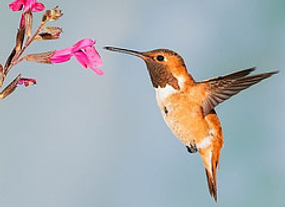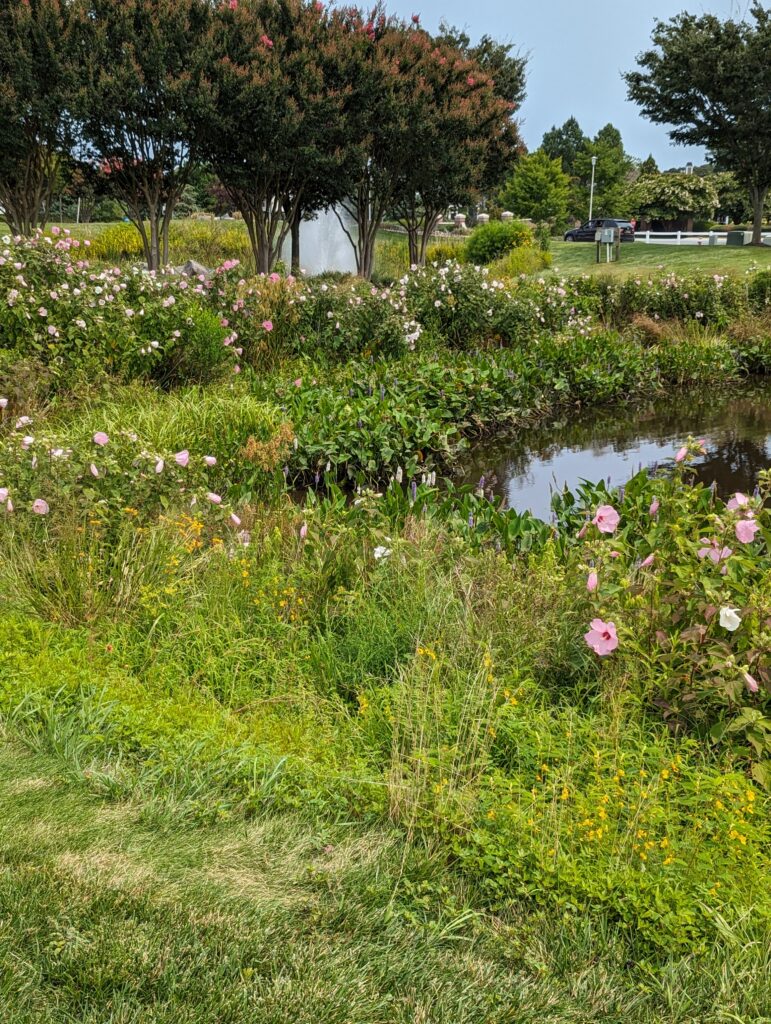Nothing is more calming than to witness hummingbirds fluttering next to a beautiful flower or see butterflies floating through the garden. Wouldn’t it be glorious to have them visit each and every day? It’s important to know what flowers attract hummingbirds and butterflies in order to have such delightful daily visitors.
“Some of the links within this post are affiliate links on which I receive a small compensation from the sale of certain items with no extra cost to you.”
“As an Amazon Associate I earn from qualifying purchases.”
Why Do They Come?
Hummingbirds and butterflies love nectar. Nectar is a sugar rich liquid that is created by flowers and plants. This liquid gold is produced in glands of the flowers called nectaries. The hummingbird and butterfly have a symbiotic relationship with the flowers, meaning they both benefit from each other while they suck the nectar from the bloom. The hummingbird and butterfly benefit from eating the nectar because of the nutrition it provides and the flower benefits by the two pollinating the flower.
Pollination
Pollination is the transfer of pollen grains from the male anther of a flower to a female stigma. You might think there are separate male and female flowers but that’s not normally the case. Most floral reproduction is bisexual, meaning the typical flower has both the male stamen (where the anther is located) and the female pistil (where the stigma is located). There are some exceptions though, such as squash that grow separate male and female plants.
Hummingbirds
As the hummingbirds hover over their favorite flower they are actually transferring the pollen grains from one plant to the next. They particularly like tubular shaped blossoms because they hold the most nectar.
Hummingbirds have very long narrow beaks which make it easy for the bird to dip its beak into a tube. They do not have a strong sense of smell so it does not matter if the flower is fragrant. Most pollinators are attracted to the scent of a flower so the hummingbirds are doing us a favor by pollinating less aromatic flowers. Hummingbirds prefer the color red.
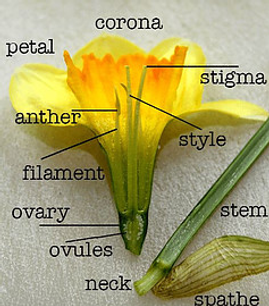
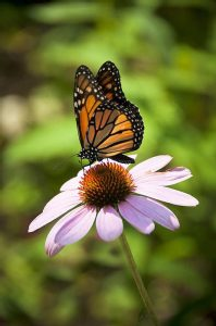
Butterflies
Butterflies also like nectar. It is their flight fuel. They, too, have a weak sense of smell but DO have a discriminating eye for color. Butterflies prefer the colors purple and pink. These beauties also prefer large flat flowers that act as a large landing pad for them. They pollinate the flower by having nectar coated on their bodies and legs and then landing on another blossom. Butterflies also enjoy foraging for food during the day when the flowers are open and in full bloom.
For more information on pollination, click here.
Butterfly on coneflower
Good Eats Make for Plentiful Flowers
There are many benefits to attracting butterflies and hummingbirds to your garden.
- Pollination
- Eliminating certain insects
- Education
- Aesthetics
As explained above, it is advantageous to have these lovelies visit your garden to pollinate your flowers. Through pollination you can almost guarantee plentiful flowers.
In addition to pollination, hummingbirds enjoy eating certain types of insects. These include beetles, mosquitos, ants, aphids, weevils, gnats and fruit flies. These are all pesty bugs that you would rather not have in your outdoor oasis.
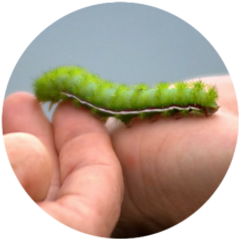
Butterflies do not eat insects, they’d rather suck the nectar from flowers. They’ll munch on leaves of plants while in the larva stage of metamorphosis.
Species of Hummingbirds and Butterflies
There are 330 different species of hummingbirds, although most live around the equator. In addition to that, there are about 17,500 species of butterflies scattered around the world, with about 750 varieties in the United States.
One can learn so much about these species. In addition to learning their life stages, identifying the different types of hummingbirds and butterflies can be an education in itself. Bird watching and butterfly watching is an enjoyable pass time.
One other benefit of having these exotic creatures in your garden is solely for the aesthetics. Who doesn’t like watching a hummingbird or butterfly gracefully drift over an array of colorful flowers?
If You Plant Them, They Will Come – Hummingbirds!
Hummingbirds and butterflies each prefer a particular diet. They both enjoy nectar, and are fussy when it comes to the shape of the blossom they eat from as stated above. It is important to plant flowers to their liking if you want to attract an abundance of them to your garden.
Below is a list of colorful flowers that hummingbirds enjoy. Notice that most are tubular in shape.
Annuals: Perennials: Biennials:
- cleomes daylilies foxgloves
- impatiens lupines hollyhocks
- petunias bee balms
Below is a list of colorful flowers butterflies swarm to. These flowers are more spreading in nature, providing the butterflies with a comfortable landing pad.
Perennials: Annuals:
- blazing star flowers lantana
- black eyed Susans calendula (pot marigolds)
- phlox
- coneflower
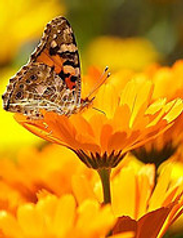
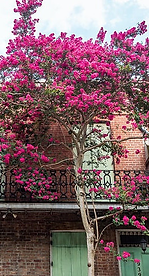
If You Supply This, They Will Stay!
Hummingbirds:
By providing a good habitat, your hummingbirds will linger. They thrive on enough water, good food, shelter, and security. Try planting some trumpet vines (perennial) that will grow from the ground to about 10 feet. This will supply food and security for them.
You may want to add a bubbling fountain or a soft spray from a sprinkler to water and bathe them. They also enjoy shade so be sure to have a canopy of perhaps a rose of Sharon (tall shrub with tubular flowers). A crepe myrtle is also a great tree that will supply shade. It is a fast grower and can top out at 20 feet if you have that variety. They also produce beautiful long clusters of purple, pink or white flowers that bloom from mid to the end of summer and are deer resistant.
Butterflies:
Butterflies require a slightly different habitat from hummingbirds. Since they are so light, the wind directly affects them. If you live in the northern hemisphere, plant your tallest shrubs in the northwestern area of your garden and tailor them to the shortest in the southeast. This is because the prevailing winds are from the northwest. If you live in the southern hemisphere, do the reverse. This provides a nice buffer or windbreak for them.
Butterflies love crepe myrtles and butterfly bushes, which are shrubs not flowers but look delightful scattered strategically in a garden. Butterflies are attracted to and prefer specific colors, mainly purple, pink, yellow, white, blue and red in that order. By planting the flowers named in this post you will attract butterflies and will have beautiful blossoms from summer through fall. Butterflies also need a water source and like high humidity. So if you live in a dry climate, it may be difficult to attract butterflies.
Click here for butterfly flowers from Etsy.
In conclusion, be sure to supply the following:
- water
- food
- shelter
- security
One Final Thought
(As an Amazon Associate I earn from qualifying purchases.)
How about hanging a RED hummingbird feeder in your yard? It’s very easy to make the faux nectar.
Recipe for sugar water: Source – Smithsonian’s National Zoo and Conservation Biology Institute
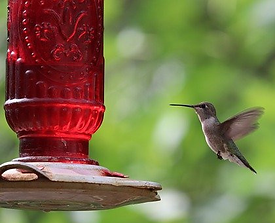
Ingredients:
- refined white sugar
- water
Directions:
- Mix 1 part sugar to 4 parts water (ex: 1 cup sugar to 4 cups water)
- Do NOT add red dye. (the dye could impair hatching and/or cause skin and bill tumors)
- Fill your feeder with the mixture
- Store extra sugar water in refrigerator
- Change and clean feeders every other day to prevent mold growth
(Some of the links within this post are affiliate links on which I receive a small compensation from the sale of certain items.)
So What Are You Waiting For?
Isn’t it time you created a beautiful backyard habitat to attract these varieties of fine feathered friends and six-legged, four winged insects? I hope you received a lot of good tips from this post and have learned what flowers attract hummingbirds and butterflies.
If you have any questions regarding this topic, please leave them below. I’ll be sure to get back to you. And let me know what you thought of this post! Here’s to creating beautiful habitats!
Happy gardening.
Nina
bestgardeningforbeginners@gmail.com

